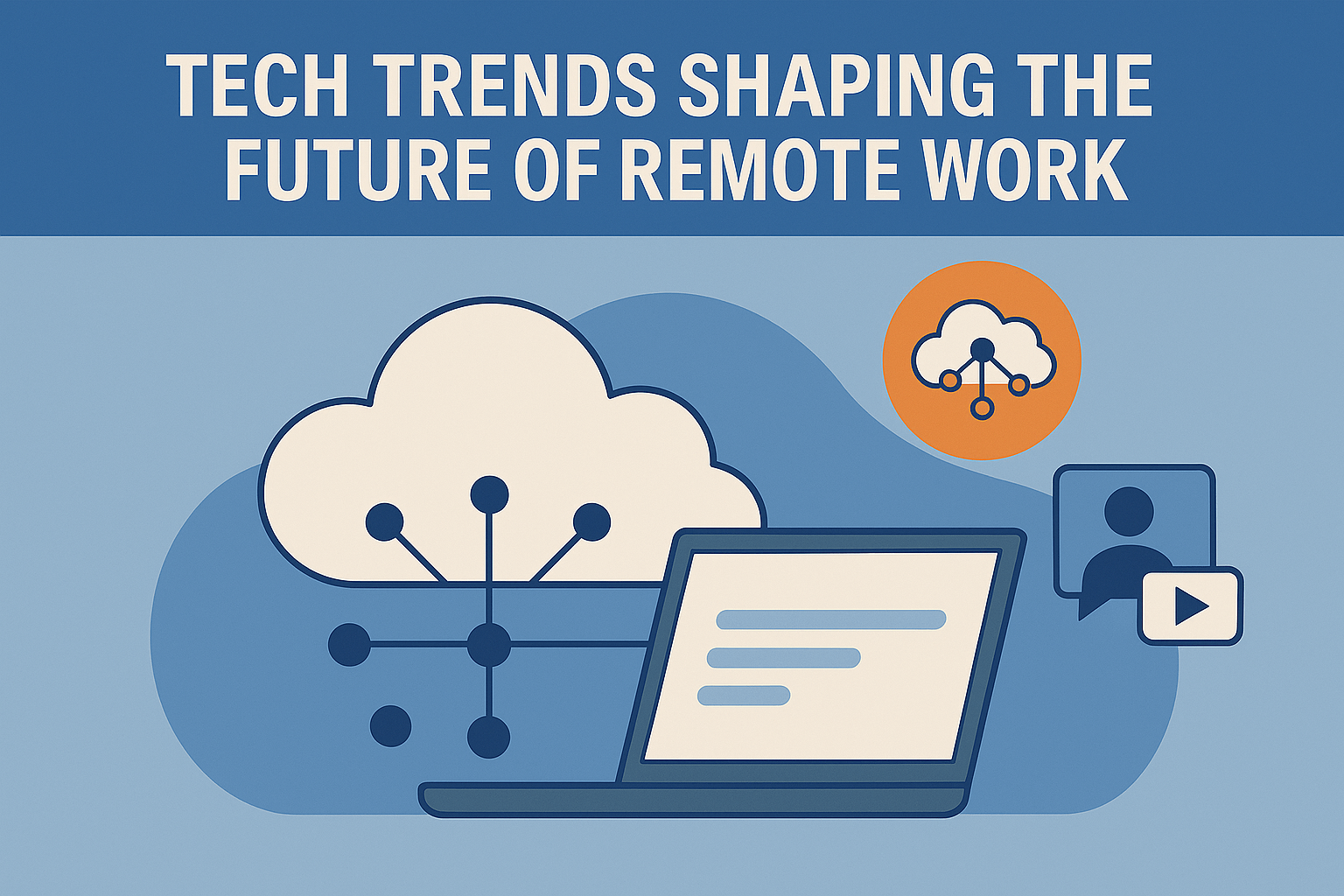Written by:
Published on:
Nov 5, 2025


Remote work is no longer a temporary solution—it’s a defining feature of modern business. As companies continue to embrace distributed teams, technology is rapidly evolving to support collaboration, productivity, and employee well-being across time zones and continents. From AI-driven project management tools to immersive virtual workspaces, the future of remote work is being shaped by innovation at every level.
Artificial intelligence is playing a central role in helping remote teams stay organized and efficient. Tools like Notion AI, ClickUp AI, and Otter.ai are transforming everyday workflows—summarizing meetings, managing tasks, and generating documentation automatically. These systems take care of administrative burdens so teams can focus on creativity, strategy, and problem-solving.
In addition to automation, AI is also enhancing decision-making. By analyzing communication patterns, project timelines, and workload distribution, AI can highlight inefficiencies before they become bottlenecks, ensuring teams stay balanced and productive.
One of the biggest shifts in remote work is the move toward asynchronous communication—where teams don’t need to be online at the same time to collaborate effectively. Platforms like Loom, Slack threads, and Notion databases allow employees to share updates, record explanations, and document decisions without scheduling yet another meeting.
This model helps reduce burnout and accommodates global teams working across multiple time zones. Instead of constant notifications or back-to-back video calls, asynchronous workflows promote deep work and flexible schedules.
Virtual reality (VR) and augmented reality (AR) are beginning to reshape how remote teams interact. Tools like Spatial and Horizon Workrooms enable employees to “meet” in immersive digital environments, offering the body language and spatial awareness often missing from video calls. While still emerging, these technologies are paving the way for more natural and engaging online collaboration.
Meanwhile, hybrid work setups are driving demand for seamless integrations—video conferencing platforms that blend physical meeting rooms with remote participation, ensuring everyone has an equal seat at the table.
As remote work expands, so do cybersecurity concerns. Businesses are investing in zero-trust frameworks, endpoint security, and encrypted collaboration tools to protect sensitive information. Cloud infrastructure continues to improve, enabling faster, more secure connections for teams around the world.
Reliable internet access and digital infrastructure have also become critical to workplace equality—ensuring that remote employees have the same quality of access as those in-office.
Despite all the innovation, technology alone doesn’t make remote work successful—people do. The most effective teams pair advanced tools with strong culture, clear communication, and empathy. Tech trends can empower, but it’s the human element that gives them purpose. As companies refine their remote strategies, those that blend smart tools with mindful leadership will define the future of work.

Artificial intelligence isn’t just for tech giants anymore. Over the past few...

Gone are the days when building a website required knowing multiple programming...

Marketers love a good funnel. It’s the backbone of how we think about customer...